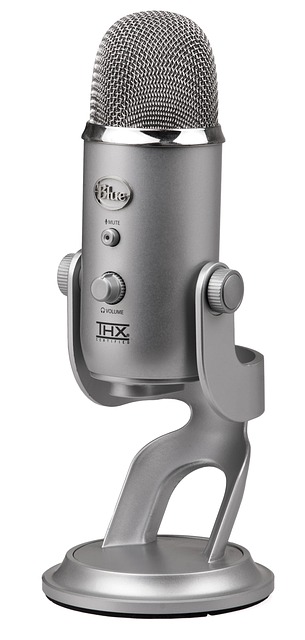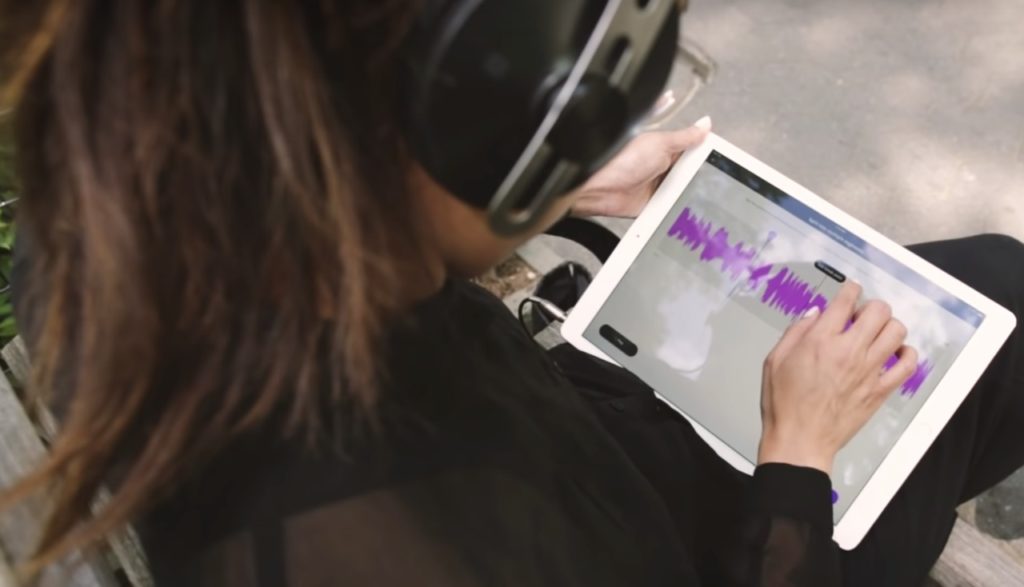If you’re thinking of creating a podcast, or want to know how to improve your existing podcast, you’ll need to spend a bit of money and a chunk of time setting yourself up for success. The good news: there’s no shortage of free or inexpensive professional-level tools and services to help you.
The first thing you should get is a quality microphone. The worst thing you can do in podcasting is to use your computer or phone’s internal microphone to record. You want your audio to sound clear and professional.
As you’ll see, it’s also a good idea to get a software tool to clean up and edit your audio files. Plus you’ll need a decent hosting and distribution platform.
The microphone
If you’re just starting a podcast, you probably only want to spend a couple of hundred dollars max on a quality microphone.

The Blue Yeti USB Microphone is a popular pick with a number of audio reviewers, including Wirecutter, Micreviews, and Adorama. At US$110, it’s a solid choice for a relatively low price.
The other end of the spectrum is a more professional microphone setup, as deployed by Doug Metzger from Literature and History.
“My main rig consists of two AKG C214 large diaphragm condenser mikes,” he explained during his interview with Creator Interviews. “I only use one mike to track voiceover; the other is for stereo recording guitar, banjo or mandolin.”
The AKG C214 Professional Large-Diaphragm Condenser Microphone will currently set you back US$332, so it’s three times the price of the Yeti. But if you’re doing your own music or just obsessed with audio quality – as Metzger is on both counts – then the AKG C214 is probably going to be worth it.
Editing audio
For editing the audio and music files for Literature and History, Doug Metzger uses Pro Tools. It’s a digital audio workstation by the company Avid and costs $299 per year for individuals. Pro Tools is popular with professional and amateur musicians alike, but obviously it doesn’t come cheap.
A better option if you’re just starting out is Audacity, a free audio editing and recording software tool. Audacity is open source and works across platforms.

I’ve used Audacity for a number of years, even though I don’t currently run a podcast. In my past business, the tech blog ReadWriteWeb, we ran a podcast for a while and I also conducted many recorded interviews for the site. So I can confirm that Audacity is easy to use, and the results are great. You can do everything you need, from editing audio (I had to remove a lot of my ums and ahs) to creating a multi-tracked audio file.
Hosting & distribution
In our creator profile earlier this week, Doug Metzger said that he uses a service called Libsyn, which “hosts the MP3s and pipes them out to the various podcatchers (Apple Podcasts, Stitcher, Podbean, etc.).”
Blubrry is another popular hosting and distribution tool and offers a particularly strong WordPress plugin.
Libsyn costs between $5–75 per month, while Blubrry is $12–80 per month.
For more detailed analysis of podcasting distribution options, I recommend checking this comparison post on the Sonics Podcasts blog. Also check out Apple’s partner directory.
There are full-service podcasting platforms too, that essentially handle everything for you – other than getting yourself a decent mic. PodBean is probably the best known “all-in-one podcasting solution.” It even offers an advertising platform. The cost starts at $9 per month.

There are a couple of free options worth mentioning. Anchor is a free service focused on podcasting. Its co-founder and CTO, Nir Zicherman, argued last year that “there is no need for podcasters to pay” in this era of cheap cloud hosting. So you can sign up and hold him to that promise.
The other free tool of note is SoundCloud, which has a built-in social network and a slick interface. A possible drawback is the company’s recent financial problems, which make its long-term future slightly questionable.
Extra equipment (e.g. for music)
As noted in my profile of Doug Metzger, he creates his own music for Literature and History. If you’re of a similar mind (and talent), here’s his setup in addition to Pro Tools:
- an Avid outboard deck with eight preamps
- Native Instruments K10U
- a full sized controller
- a custom computer
“I spend a lot of time on the technical audio details,” Metzger told me, “and I always listen to a finished program in multiple environments (headphones, monitors, etc.) to check the mix.”

He also has “carefully built templates that have EQ/Compression/Maximizer/Dither built the way I want them.”
Conclusion
As you can see, it’s relatively straight forward – and inexpensive – to set up a podcast in this era. The only thing you should absolutely spend money on is a decent microphone, which you can get for around $100.
If you do want to take it up another level in production quality, Doug Metzger’s suggestions as outlined above are worth looking into.
If you enjoyed this post, check out Cybercultural – my new subscription newsletter covering the intersection of technology and the cultural industries. Click here to sign up to Cybercultural.
